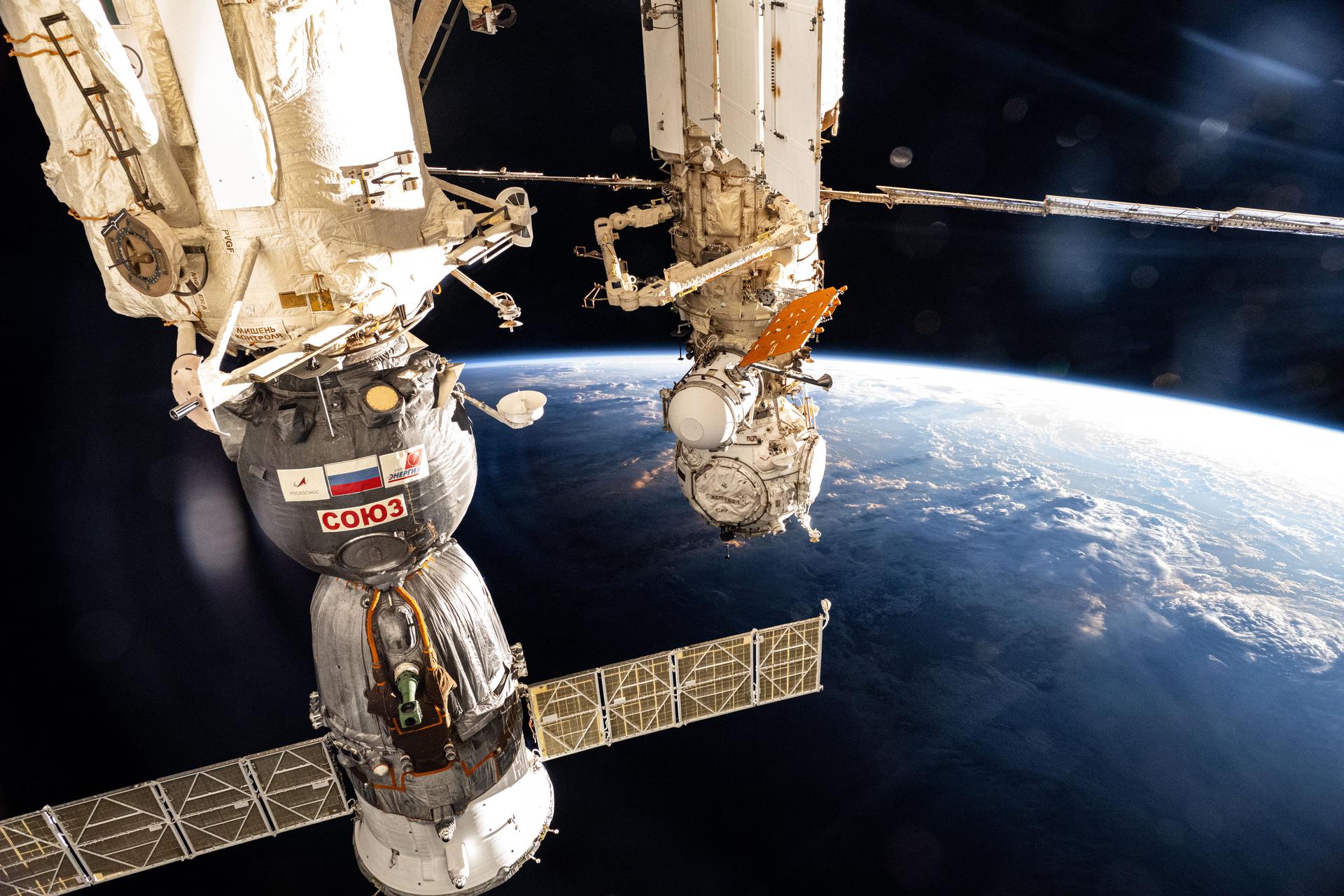Crew Works Space Health and Robotics for Station Upkeep
Biomedical research topped the science schedule aboard the International Space Station on Tuesday helping doctors understand how weightlessness affects the cardiovascular and immune systems. The Expedition 73 crew members also continued their Earth observation studies, robotic inspection duties, and advanced life support maintenance.
Humans continue to learn how to survive in space after a millennia evolving in Earth’s gravity. Doctors are studying every aspect of an astronaut’s physiology before, during, and after a spaceflight. Data is constantly collected from the numerous human research studies aboard the orbiting lab and added to the ever-growing knowledge base of space biology insights. This gives doctors a clearer picture into how the human body adapts to microgravity helping them design exercise programs, nutritious diets, advanced therapies, and more to keep astronauts healthy on long term space missions.
Astronauts Jonny Kim of NASA and Takuya Onishi of JAXA (Japan Aerospace Exploration Agency), station flight engineer and commander respectively, contributed to the ongoing space biology studies looking at cardiac function and cellular immunity. Kim worked in the Columbus laboratory module as ground surgeons remotely scanned his chest using the ECHO tele-operated ultrasound system. The medical operators were looking for potential space-caused changes in Kim’s heart and artery function for the CIPHER suite of 14 human research investigations. Onishi collected and processed his blood and saliva samples in the Harmony module for the Immunity Assay study. Afterward, he stowed his saliva samples in a science freezer then installed his blood specimens in the Kubik incubator for later analysis. The experiment is observing how spaceflight factors such as weightlessness and radiation affect cellular immune function.
Kim and Onishi later teamed up with NASA Flight Engineer Nichole Ayers and assisted her as she replaced components on an experimental carbon dioxide removal device. Also called the Thermal Amine Scrubber, the advanced life support mechanism is testing a new method that removes carbon dioxide from the station’s atmosphere and recovers water for oxygen generation.
NASA Flight Engineer Anne McClain’s first half of her shift was packed with science supporting physics and robotics research. She first swapped sample cartridges inside the Materials Science Laboratory, a furnace used for discovering new applications for existing materials and new or improved materials. Next, she installed imaging hardware on an Astrobee robotic free-flyer so ground controllers could monitor its autonomous docking maneuvers inside the Kibo laboratory module. McClain then spent the rest of her day on maintenance setting up a wearable radiation monitor, filling water tanks, and finally swapping out a computer hard drive.
Roscosmos Flight Engineer Sergey Ryzhikov, a veteran of two previous space station missions, installed photographic hardware for a pair of Earth observations studies, one looking at the effects of natural and man-made disasters and the other imaging Earth’s nighttime atmosphere in ultraviolet wavelengths. Ryzhikov also joined Flight Engineer Alexey Zubritsky searching for extra stowage space in the Zvezda and Rassvet modules. Zubritsky later transferred water from the Progress 90 cargo craft docked to the Poisk module into station orbital tanks. Flight Engineer Kirill Peskov activated the European robotic arm (ERA) and monitored its operations using a computer interface and visually inspected the Rassvet module’s docking port.
The SpaceX Dragon cargo spacecraft completed its mission on May 25 after splashing down off the coast of California completing a month-long stay docked to the Harmony module’s space-facing port. Dragon parachuted to Earth returning several tons of completed science experiments, time-critical research samples, and lab hardware for analysis back on Earth.
Learn more about station activities by following the space station blog, @space_station and @ISS_Research on X, as well as the ISS Facebook and ISS Instagram accounts.
Get the latest from NASA delivered every week. Subscribe here.

























